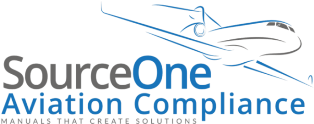Required Navigation Performance (RNP) is a type of performance-based navigation (PBN) that allows an aircraft to fly a specific path between two 3-dimensionally defined points in space with 95% accuracy at all times. RNP 4 and/or RNP 10 approval refers to long range navigational capability of an aircraft operating in remote airspace. Improved navigation capability allows for reduced lateral/longitudinal spacing along heavily used oceanic tracks particular to the Pacific airspace. Qualified navigation equipment for the aircraft and proper operational procedures for the flight crew are required for RNP approval. This now affects the Gulf of Mexico (GoMex) CTA. An FAA RNP 4 LOA (B036) qualifies the aircraft by default for RNP 10 as RNP 4 capable navigation is more precise and the requirements are more stringent as required by the FAA & ICAO.
The areas that require RNP10 include the Central East Pacific (between Hawaii and the US west coast) and Northern Pacific (NOPAC), each utilize 50 nm lateral spacing. RNP10 is also applied in the Southern Pacific (SOPAC) Regions. Certain Pacific regions further reduce separation to 30 nm therefore requiring RNP4 approval.
It is important to note that operators should not file RNP 4 as an equipment suffix in the ICAO flight plan unless the aircraft is equipped, certified and the operator has an LOA or Opspec for CPDLC (Data Link) and/or ADS-B.
Information required for RNP approval includes airworthiness documents that establish the aircraft navigation system is RNP approved and that approved maintenance procedures are performed. Dual Long Rang Navigation Systems are required except of the Gulf of Mexico or GoMex which requires only a Single Long Range Navigation System. Operators that obtain RNP 4 approval are not required to also have RNP 10 approval as RNP 4 is the more stringent standard.
| Criteria | B-RNAV (aka RNAV 5) |
MNPS | P-RNAV (aka RNAV 1) |
RNAV 1 | RNAV 2 | RNP-4 | RNP-10 |
| Location | Europe en route arrival |
Atlantic Caribbean * Parts of Canada * |
Europe * en route arrival approach departure |
U.S. en route arrival approach departure |
U.S. en route arrival departure |
Asia * Pacific * oceanic remote |
Worldwide * oceanic remote |
| Accuracy | +/- 5 nm 95% time | 6.3 nm lateral * | +/- 1 nm 95% time | +/- 1 nm 95% time | +/- 2 nm 95% time | +/- 4 nm 95% time | +/- 10 nm 95% time |
| Performance | N/A | N/A | N/A | N/A | N/A | Integrity Continuity Monitoring Alert |
N/A |
| Aircraft Apvl | AFM Statement | State Apvl * | AC 90-96A JAA TGL-10 |
AFM Statement | AFM Statement | AFM * STC * |
AFM |
| Operator Apvl (91) | None Req. | LOA | LOA | None Req. | None Req. | LOA | LOA |
| Operator Apvl (Commercial) | B034 | B039 | B034 | B035 | B035 | B036 | B036 |
| Regulatory | AC 90-96A | ICAO Doc 7030 FAA Order 8900 |
AC 90-96A | AC 90-100A | AC 90-100A | ICAO Doc 7030 FAA Order 8900 |
ICAO Doc 7030 FAA Order 8900 |
* Note: the table simplifies various items, for a more complete explanation, see the referenced links.
In order to fully utilize RNP4 in all areas of 30nm spacing including certain ATC areas such as SOPAC, NOPAC and Central East Pacific (CEP), operators are required to also have data link (ADS, CPDLC) approval in these areas only WATRS Plus and GoMex do not require CPDLC/DATALINK and ADS-C. It is suggested that qualified operators request RNP4 approval when obtaining a Data Link LOA. You will also know that certain Cloud-based Flight Planning software allows for RNP4 enroute default ie: FLTPLAN.com which is to each operator’s advantage on flight plan routing especially where 30NM Lateral separation is utilized but it is recommended and should be required only when the operator has an LOA and the aircraft is certified for Data Link (CPDLC) and ADS. Here is a link to a short summary I wrote to help explain terms and effects based on current information:
Required Navigation Performance 10 versus 4 20May2013
